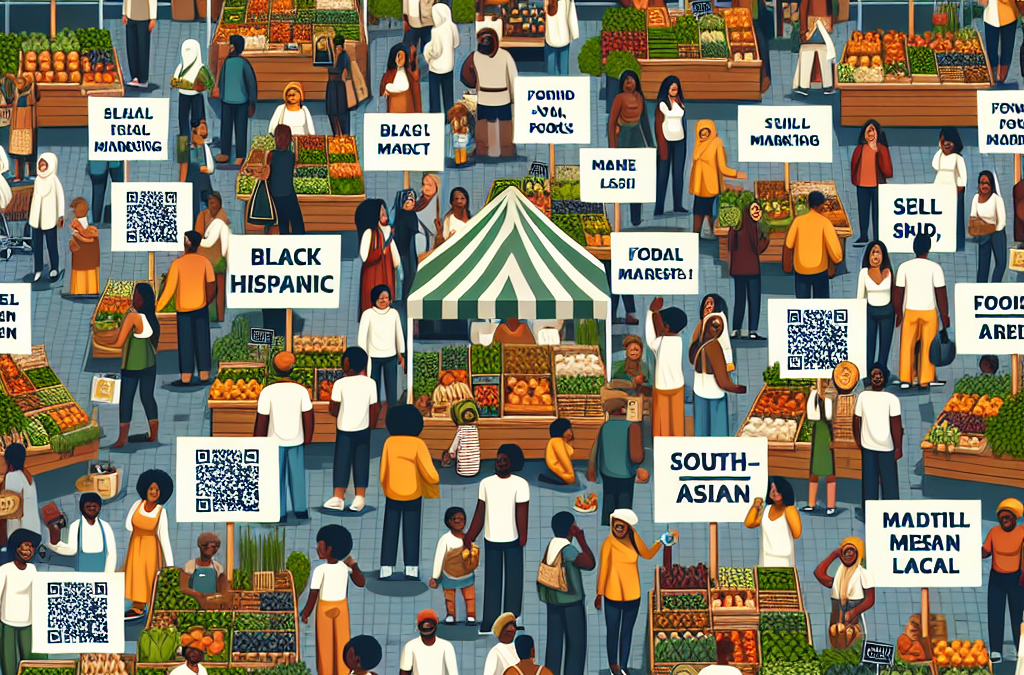Know Your Audience
Conducting Market Research
Understanding your local audience is the cornerstone of effective marketing. Before diving into campaigns, I always suggest doing some serious market research. This means looking at demographics, interests, and behaviors. It’s like getting to know your neighbors—you want to find out what resonates with them!
Surveys, focus groups, and social media polls can provide invaluable insights. I remember organizing a small focus group with a few loyal customers, and their feedback shaped our brand’s voice significantly. Plus, it also helps in identifying pain points your audience might have, creating a direct connection.
Lastly, don’t forget about the digital footprint! Analyzing online behavior through tools like Google Analytics can give you more than you bargained for when it comes to understanding your locals.
Building Customer Personas
Once you’ve gathered enough data, it’s time to create customer personas. I find this step super fun! Developing a semi-fictional character that embodies your typical customer helps in visualizing who you’re really marketing to.
Think about their age, profession, hobbies, and even what problems they might be facing. By outlining these details, it’s easier to tailor your messages in a way that feels genuine to them. I would even name my personas, which made it feel like I was chatting with friends rather than random customers.
Your marketing strategies will be much more targeted, making it simpler to create content that speaks directly to your audience’s interests and needs.
Regular Audience Engagement
It’s all about staying connected! Engaging regularly with your audience not only fosters community but also makes your brand more relatable. Utilize social media platforms to interact, ask questions, and respond to comments. I’ve found that a simple “thank you” goes a long way!
Running contests or giveaways can also energize your local community and draw in new customers. I once held a photo contest featuring our products, and you should’ve seen the excitement! It brought everyone together and introduced our brand to their friends.
Remember, people want to feel valued. Acknowledging their presence helps in building loyalty, which is essential for any successful local marketing campaign.
Optimize for Local SEO
Claiming Your Google Business Profile
If you haven’t already, claiming your Google Business Profile is a must! This essentially puts your business on the map—literally. I can’t stress enough the impact this had on my visibility in local searches. Ensuring your information is correct and frequently updated helps potential customers find you more easily.
Plus, you get to showcase reviews, photos, and important details like hours of operation. Every time I post updates, it feels like I’m waving a flag saying, “Hey, come check us out this weekend!”
Don’t forget to encourage your customers to leave reviews! Their good experiences can help significantly in clinching the deal with potential clients browsing for options in your area.
Local Keywords
Utilizing local keywords can give your content a significant boost in visibility. When crafting blog posts or adding descriptions to your website, I always weave in phrases that reflect local intent, like “best coffee shop in [Your City].” It just makes sense!
This doesn’t just apply to content but extends to titles, meta descriptions, and even pictures! When in doubt, I suggest doing some keyword research to find out what locals are searching for, and then use that info to guide your content strategy.
The more accurately you reflect your local audience’s search behavior, the more likely you’ll appear in their online searches. Simple as that!
Mobile Optimization
Let’s face it: everyone’s glued to their phones, right? Therefore, ensuring that your website is mobile-friendly is no longer optional; it’s critical. I still recall when I first optimized my website for mobile devices. The increase in traffic was astonishing!
Users should be able to navigate effortlessly on their phones, whether accessing location information, contact details, or actual products. No one wants to pinch and zoom just to read a little bit of text!
Also, make sure your site loads quickly. If a page takes forever to load, guess what? People will bounce right off. Put yourself in their shoes—what would frustrate you?
Leverage Social Media
Choosing the Right Platforms
Not all social media platforms are created equal. My advice? Discover where your audience hangs out. For instance, if you’re selling vibrant home decor, Instagram could be your best friend.
On the flip side, if you have a local service-oriented business, platforms like Facebook might prove more beneficial for community engagement. Every entrepreneur’s experience will differ based on the target market, so trial and error is key!
Regularly analyzing which platforms yield the best engagement will help you allocate your time and resources effectively. It’s about fishing in the right pond!
Content that Resonates
Social media thrives on content! I will always emphasize the significance of creating value through your posts. Whether it’s educational, entertaining, or inspiring, your goal should be to connect with your audience meaningfully.
Visual content, especially videos, tend to perform exceptionally well. I even started sharing behind-the-scenes glimpses of my business; the response was heartwarming! It made people feel part of my journey and not just a number.
Don’t forget to invite engagement! Ask questions or prompt discussions. This builds community and can improve your visibility even further on these platforms.
Running Targeted Ads
When done right, running targeted ads can be an incredibly effective way to reach your local audience. I remember my first local ad campaign—it was nerve-wracking, but the results exceeded my expectations!
Utilize Geo-targeting to ensure your ads are only shown to those in specific locations. This ensures your dollars are spent reaching just the people you want to attract. Consider special promotions or local events that make your ads time-sensitive. FOMO (fear of missing out) can be a powerful motivator!
Lastly, measure the success of your campaigns. Analyze results and adjust your strategies accordingly. It’s all about refining and improving for the next go-around!
Form Partnerships with Local Businesses
Collaboration Opportunities
Networking isn’t only for big corporations. Building relationships with other local businesses can be mutually beneficial. I often collaborate with other local brands on events or promotions, and I can tell you—two heads are definitely better than one!
Think creatively! This could be co-hosting a workshop, cross-promoting on social media, or offering bundled deals. My favorite experience was teaming up with a local bakery for a pop-up event. We combined resources and promoted each other, and it was a blast!
It’s about creating community vibes and making your brand stand out. When you share customers, you both thrive!
Support Local Causes
Another fantastic way to establish your brand locally is by supporting local causes. Whether it’s sponsoring local sports teams or donating to charities, showing that you care about your community builds goodwill.
People remember those who give back, and I’ve noticed that local outreach effortlessly turns into word-of-mouth marketing. I hosted a charity day where profits went to a local shelter. The community’s response was uplifting, and many of those attendees turned into loyal customers afterward!
Not only does it feel good, but it instills more loyalty from your customers, who appreciate a brand that genuinely cares about its community.
Networking Events
Never underestimate the power of face-to-face connections. Attending local networking events not only helps spread your brand awareness but lets you meet potential customers and collaborators in person. It’s a game-changer!
I try to make it to a local chamber of commerce meeting or community fair whenever I can. It’s a perfect opportunity to pitch your services while also getting valuable insights from other business owners. Plus, there’s something about mingling in person that just can’t be replicated online.
Keep your business cards handy and don’t be shy to chat! These local connections often lead to opportunities you wouldn’t have known existed otherwise.
Measure and Adapt Your Strategies
Track Your Performance
If I’ve learned anything from my years in marketing, it’s to never skip tracking your performance. Use analytics tools to monitor how your campaigns are doing. I always geek out over the data!
This includes website traffic, social media engagement, and conversion rates. Seeing what works and what flops helps in reallocating resources to areas that truly hit home, making your efforts more efficient.
Becoming familiar with key performance indicators (KPIs) is essential for measuring success. Keeping an eye on these metrics will give you the outline needed to tweak ongoing campaigns for even more success!
Adjusting Your Approach
Don’t be afraid to pivot! If something isn’t working as you’d hoped, it’s totally fine to change your approach. I recall a campaign that seemed promising but didn’t work out; tweaking the messaging and visuals brought new life to it!
Remember, flexibility is key. Effective local marketing is all about trial and error—what works today may not work tomorrow. Staying adaptable ensures you’re always on the cutting edge of your community’s needs.
Being responsive to changes in the market gives you an advantage, setting you apart from competitors who might cling to outdated methods.
Feedback Loop
Never underestimate the power of feedback! I set up a mechanism to receive feedback from customers regularly, and it has been so helpful. This could be through email surveys, suggestion boxes, or even casual conversations during visits.
When customers feel their opinions are valued, it builds stronger relationships. Plus, they might provide insights that you had never considered, giving direction for future marketing efforts.
A feedback loop helps you continue growing and altering your approach in real-time, allowing for constant evolution and relevance in the ever-changing market.
FAQ
What is the first step in local marketing?
The first step is knowing your audience. Conducting thorough market research helps you understand their needs, preferences, and behaviors.
How can I optimize my business for local SEO?
Start by claiming your Google Business Profile, using local keywords throughout your content, and ensuring your website is mobile-friendly.
What social media platforms should I use for local marketing?
Choose platforms based on where your audience is most active. For example, Instagram works great for visual brands, while Facebook is effective for community engagement.
Why is collaboration with other local businesses important?
Collaborating can help you tap into their customer base and vice versa, creating a win-win situation that boosts visibility and brand loyalty.
How do I measure the success of my marketing strategies?
Utilize analytics tools to track performance metrics like website traffic, social media engagement, and conversion rates, making adjustments as necessary based on this data.


